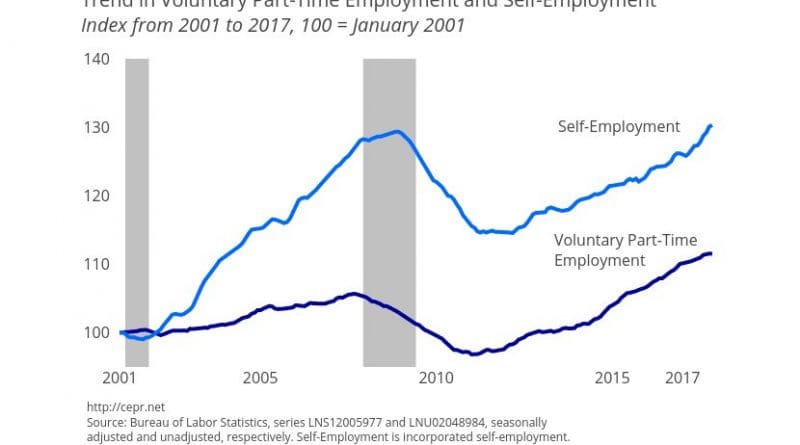Strong US Job Growth Continues In November, Prime-Age Employment Rate Hits New High For Recovery – Analysis
By Dean Baker
The Bureau of Labor Statistics reported somewhat stronger than expected job growth in November, with employers adding 228,000 jobs. This brought the average for the last three months to 170,000. The unemployment rate was unchanged at 4.1 percent.
While the overall employment-to-population ratio (EPOP) ticked down by 0.1 percentage point, the EPOP for prime-age workers (ages 25–54) rose by 0.2 percentage points to 79.0 percent. This is an increase of 0.8 percentage points from the year-ago level, but it is still 1.3 percentage points below the pre-recession peak.
The rise in the prime-age EPOP over the last year was primarily among women, with an increase of 1.1 percentage points. Nonetheless, it is still 0.3 percentage points below its pre-recession peak and 2.3 percentage points below the peak hit in 2000. The EPOP for prime-age men has risen 0.5 percentage points over the last year. It is 2.4 percentage points below its pre-recession peak and 3.9 percentage points below the peak reached in 2000.
In spite of these measures indicating a continued tightening of the labor market, there is still little evidence of any notable acceleration in wage growth. The annualized growth rate of wages for the last three months, compared with the prior three months, is 2.6 percent, virtually identical to the 2.5 percent rate of increase over the last year.
The relatively low percentage of unemployment due to workers voluntarily quitting their jobs (11.3 percent) suggests that workers still do not feel very confident about their job prospects. This number was 12.5 percent a year ago and had peaked at more than 15.0 percent in 2000.
The number of incorporated self-employed (a measure of people starting their own businesses) continues to run well ahead of last year’s level. The greater ability of people to start a business was one of the predicted effects of the Affordable Care Act (ACA), since they would no longer be dependent on employer-provided insurance. The number of incorporated self-employed is now almost 700,000 above its November 2013 level, an increase of 13 percent. Voluntary part-time employment has risen by 11.7 percent since the ACA took effect.
By education level, it continues to appear as though less-educated workers are the biggest gainers from the tightening labor market. Over the last year, the EPOP for college grads has not changed, while their unemployment rate has fallen by 0.2 percentage points. The EPOP for workers with just a high school degree has edged up 0.1 percentage points, while their unemployment rate has fallen by 0.6 percentage points. Workers without a high school degree had a 1.4 percentage point increase in their EPOP and a 2.7 percentage point drop in their unemployment rate.
The job growth in the establishment survey was broadly distributed across sectors. Construction and manufacturing both showed strong gains in November, adding 24,000 and 31,000 jobs respectively. Construction employment is up by 184,000 over the last year, while manufacturing has gained 189,000 jobs. Interestingly, the average hourly wage in manufacturing reportedly fell four cents in November and stands just 1.9 percent above its year-ago level.
The retail sector added 18,700 jobs in November, but employment is still down by 22,700 over the last year. After adding 27,000 jobs from November of 2015 to November 2016 (6.8 percent of total employment), the motion picture sector has lost 29,400 jobs in the last year, leaving it below its 2015 level.
Professional and technical services added 23,500 jobs, with employment now 242,600 jobs above the year-ago level. The temp sector added 18,300 jobs, putting employment 116,300 above last year’s level. Health care added 29,500 jobs, in-line with its average growth of 25,300 jobs over the last year. Restaurants added 18,900 jobs last month. While this is in–line with its growth over the last year, it is slower than the growth rate of more than 30,000 a month from 2012 through 2014. This is consistent with a tightening labor market as workers now have better options than working at low-paying restaurant jobs.
On the whole, this is a positive report, but one that indicates that the labor market can still tighten further without any major concerns about inflation.

